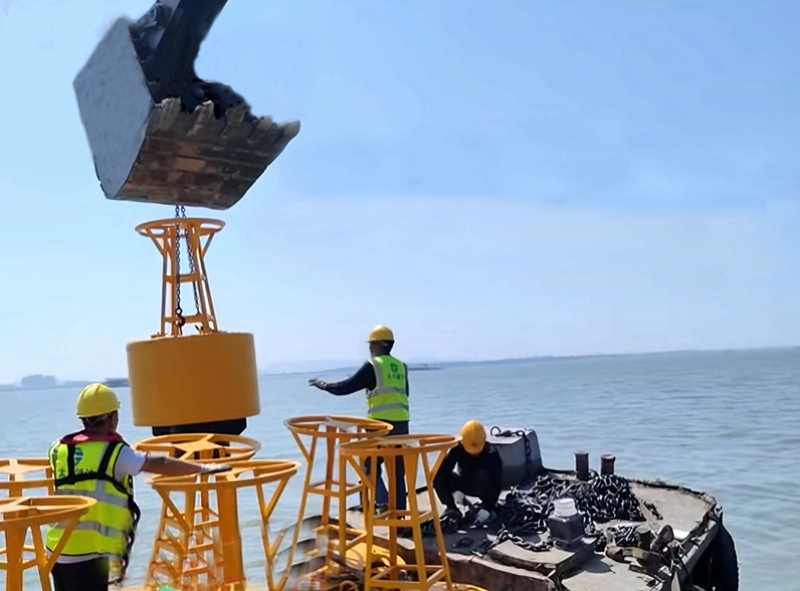Steel buoys are a type of facility commonly used for water marking, navigation, or protection. They are widely used in the management of ports, waterways, rivers, and lakes. Their main function is to help ships and shipping personnel identify specific water locations or avoid dangerous areas by floating on the water. The advantages of steel buoys are durability, stability, and the ability to withstand harsh water environments, including extreme weather such as strong winds and waves.
The following will introduce its installation steps and required tools in detail.

The installation steps and tools required are detailed below.
1. Tool Preparation
Lifting Equipment:
Select a suitable crane or hoist according to the steel buoy's weight and size. Its lifting capacity should meet the buoy's overall lifting requirements.

Measuring Tools:
such as theodolite, level, etc., are used to accurately measure the installation position and determine the installation height of the buoy.
Welding Equipment:
If some reinforcement or connection work is required on-site, electric welders, welding rods, etc. must be prepared. The welding rod model must match the material of the steel buoy.
Safety Protection Equipment:
safety helmets, safety belts, life jackets, etc., to ensure the safety of installers working on the water.
2. Site Preparation
Clean Up The Installation Site:
remove obstacles near the installation point in the water area to ensure enough operating space for equipment such as cranes.
Positioning Mark:
According to the design requirements, use measuring tools to accurately mark the installation position of the buoy on the shore or at a nearby fixed point.
3. Installation Steps
Foundation Installation:
If the steel buoy has a specific underwater foundation, such as a concrete base, the foundation construction and installation must be carried out first. This includes underwater piling, pouring concrete, and other steps to ensure that the strength and stability of the foundation meet the design standards.
Buoy Lifting:
Use a crane to slowly lift the steel buoy away from the placement site. During the lifting process, pay attention to maintaining the balance of the buoy to avoid shaking or damage to the buoy due to the shift of the center of gravity. At the same time, a dedicated person should be in charge of the crane operation to ensure the safety of the lifting.

Transport To The Installation Point:
Carefully move the lifted buoy above the pre-marked installation location. During transportation, pay close attention to the distance between the buoy and the surrounding environment to prevent collisions.
Positioning Installation:
Slowly lower the buoy above the installation location, adjust the position and direction of the buoy according to the measurement marks, and ensure that it is accurately installed in the predetermined position. If it is necessary to dock with the underwater foundation or other connecting parts, to ensure that the connection is firm, welding or bolting can be used (specifically according to design requirements).
4. Post-installation Inspection
Stability Inspection:
Observe the stability of the buoy after installation, and check for abnormal conditions such as shaking or tilting within a certain time (such as 24 hours).

Connection Inspection:
Check whether the welding points or bolt connections are firm, loose, or cracked.
Steel buoys play an important role in water operations, channel marking, and other application scenarios. Correct installation steps and the use of appropriate tools are the keys to ensuring that the buoys are installed firmly and function properly.
If you want to know more specific information about our steel buoys, please contact us or send us an e-mail.